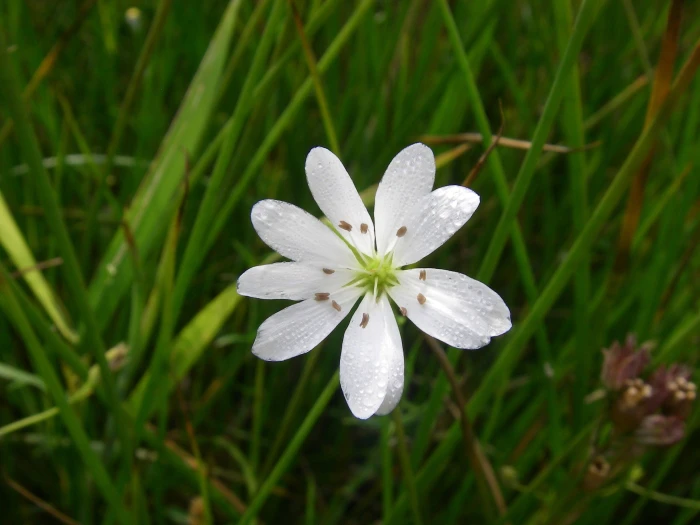Marsh Stitchwort
(Stellaria palustris)
Marsh Stitchwort (Stellaria palustris)
/
/

purperlibel
CC BY-SA 4.0
Image By:
purperlibel
Recorded By:
Copyright:
CC BY-SA 4.0
Copyright Notice:
Photo by: purperlibel | License Type: CC BY-SA 4.0 | License URL: http://creativecommons.org/licenses/by-sa/4.0/ | Rights Holder: purperlibel | Publisher: iNaturalist | Date Created: 2009-06-29T10:12:11-07:00 |

























Estimated Native Range
Climate Requirements for L'Hospitalet De Llobregat, Spain
| This Plant | Your Site | Plant Suitability for Your Location | ||
|---|---|---|---|---|
| • Precipitation | 6" - 78" | 25" | Your precipitation may be insufficient for this plant. Irrigate N" / year. | Irrigate N" / year |
| • High Temp. | 51°F - 91°F | 84°F | Your summer temperatures are normal for this plant. | Excellent |
| • Low Temp. | -57°F - 49°F | 41°F | Your winter temperatures are normal for this plant | Excellent |
This plant should grow well at your location with about N inches per year (Y minutes per month) of irrigation.
Summary
Stellaria palustris, commonly known as Marsh Stitchwort, is a perennial herbaceous plant native to a wide range of wetland habitats, including marshes, fens, wet meadows, and stream banks across temperate Eurasia. It is particularly adapted to moist, nutrient-rich soils. This species typically grows to a height of 15-30 cm and has a sprawling habit with slender, branching stems. The leaves are lanceolate and up to 3 cm long. The delicate, star-shaped white flowers, measuring about 1 cm across, bloom from late spring to early summer and are mildly showy, with five deeply divided petals giving them a fringed appearance.
Marsh Stitchwort is valued for its ability to thrive in wet conditions where other plants may struggle. It is often used in naturalistic plantings in wetland restoration projects and can be an attractive addition to water garden settings or bog gardens. It prefers consistently moist to wet soils and can tolerate partial shade, although it will bloom most prolifically in full sun. While not commonly found in traditional garden settings, its ease of maintenance and tolerance for wet soils make it a useful plant for challenging damp areas. It is not known for any significant problems with diseases or pests, but it can become leggy if not grown in enough light.CC BY-SA 4.0
Marsh Stitchwort is valued for its ability to thrive in wet conditions where other plants may struggle. It is often used in naturalistic plantings in wetland restoration projects and can be an attractive addition to water garden settings or bog gardens. It prefers consistently moist to wet soils and can tolerate partial shade, although it will bloom most prolifically in full sun. While not commonly found in traditional garden settings, its ease of maintenance and tolerance for wet soils make it a useful plant for challenging damp areas. It is not known for any significant problems with diseases or pests, but it can become leggy if not grown in enough light.CC BY-SA 4.0
Plant Description
- Plant Type: Herb
- Height: 1-2.5 feet
- Width: 0.5-1 feet
- Growth Rate: Moderate
- Flower Color: White
- Flowering Season: Summer
- Leaf Retention: Semi-deciduous
Growth Requirements
- Sun: Full Sun, Part Shade
- Water: High
- Drainage: Medium, Slow
Common Uses
Low Maintenance, Water Garden
Natural Habitat
Wetland habitats, including marshes, fens, wet meadows, and stream banks
Other Names
Common Names: Marsh Stitchwort, Meadow Starwort, Marsh Starwort, European Chickweed
Scientific Names: Stellaria palustris, ? dilleniana, Alsine glauca, Alsine glauca, Larbrea glauca var. viridis, Larbrea palustris, Stellaria barthiana, Stellaria dilleniana, Stellaria glauca
GBIF Accepted Name: Stellaria palustris